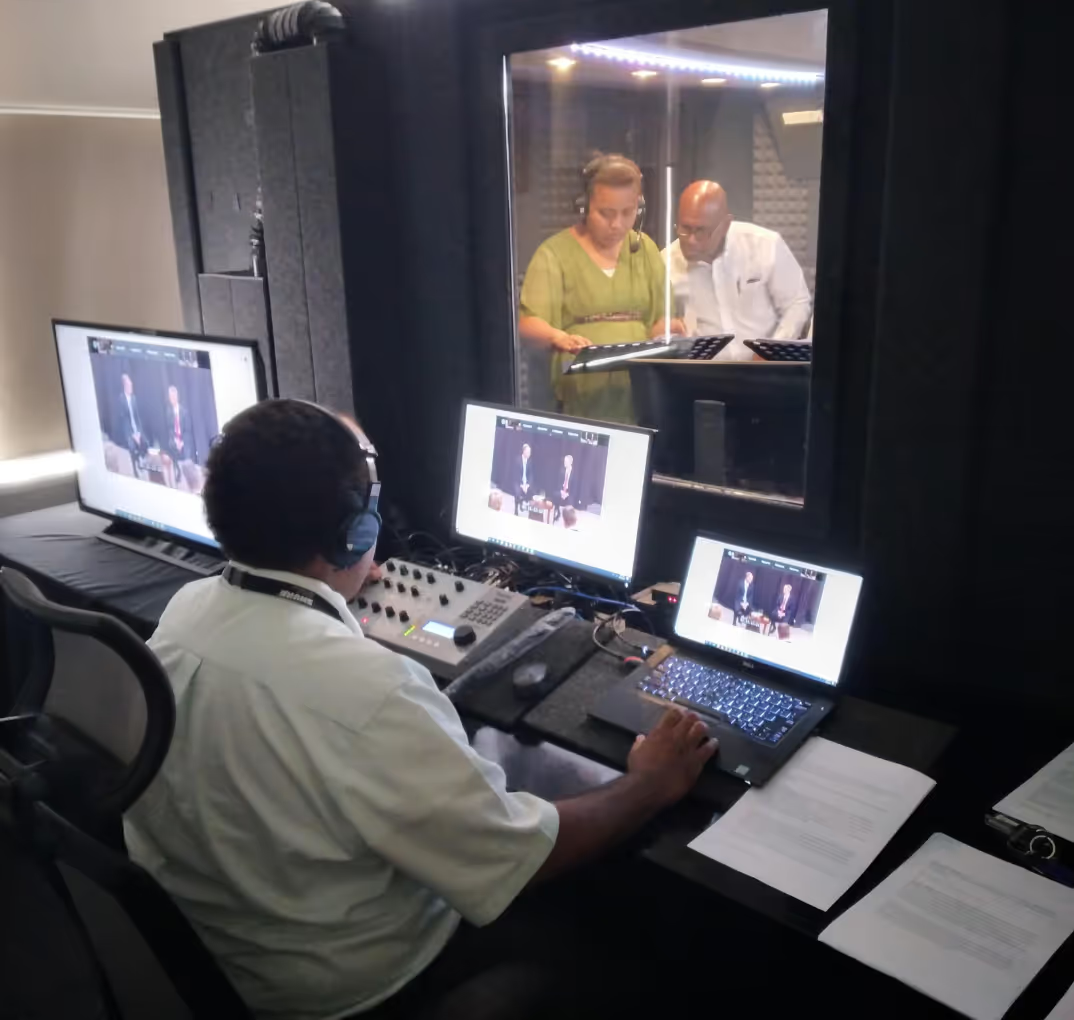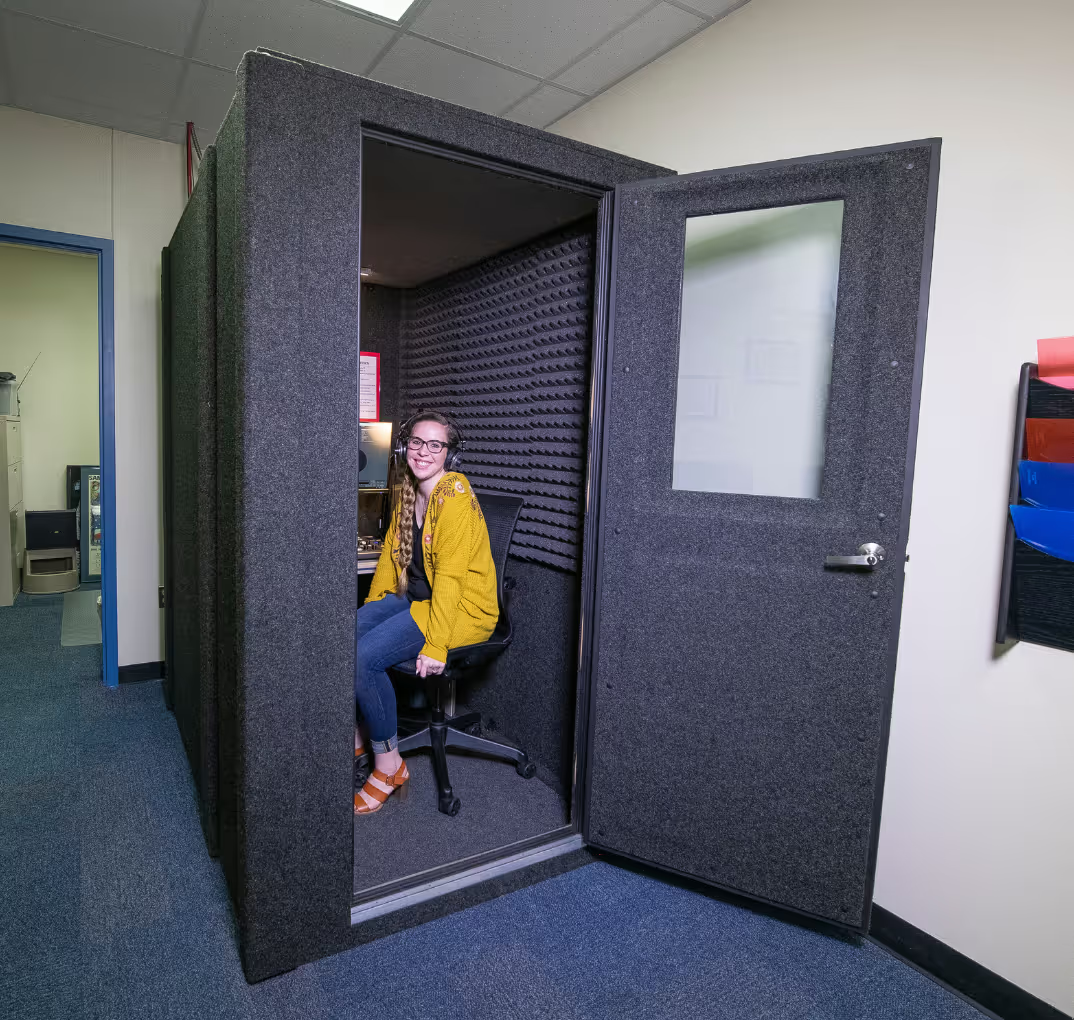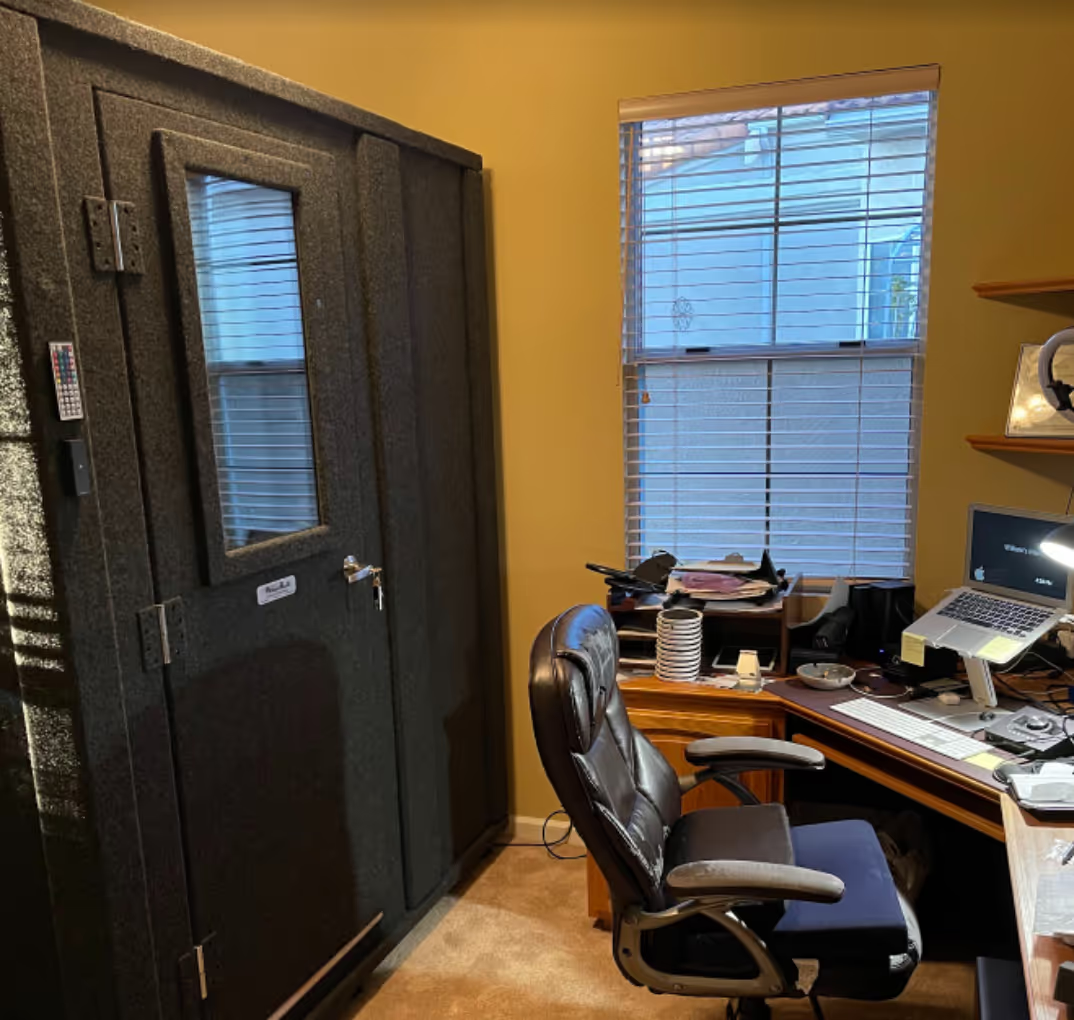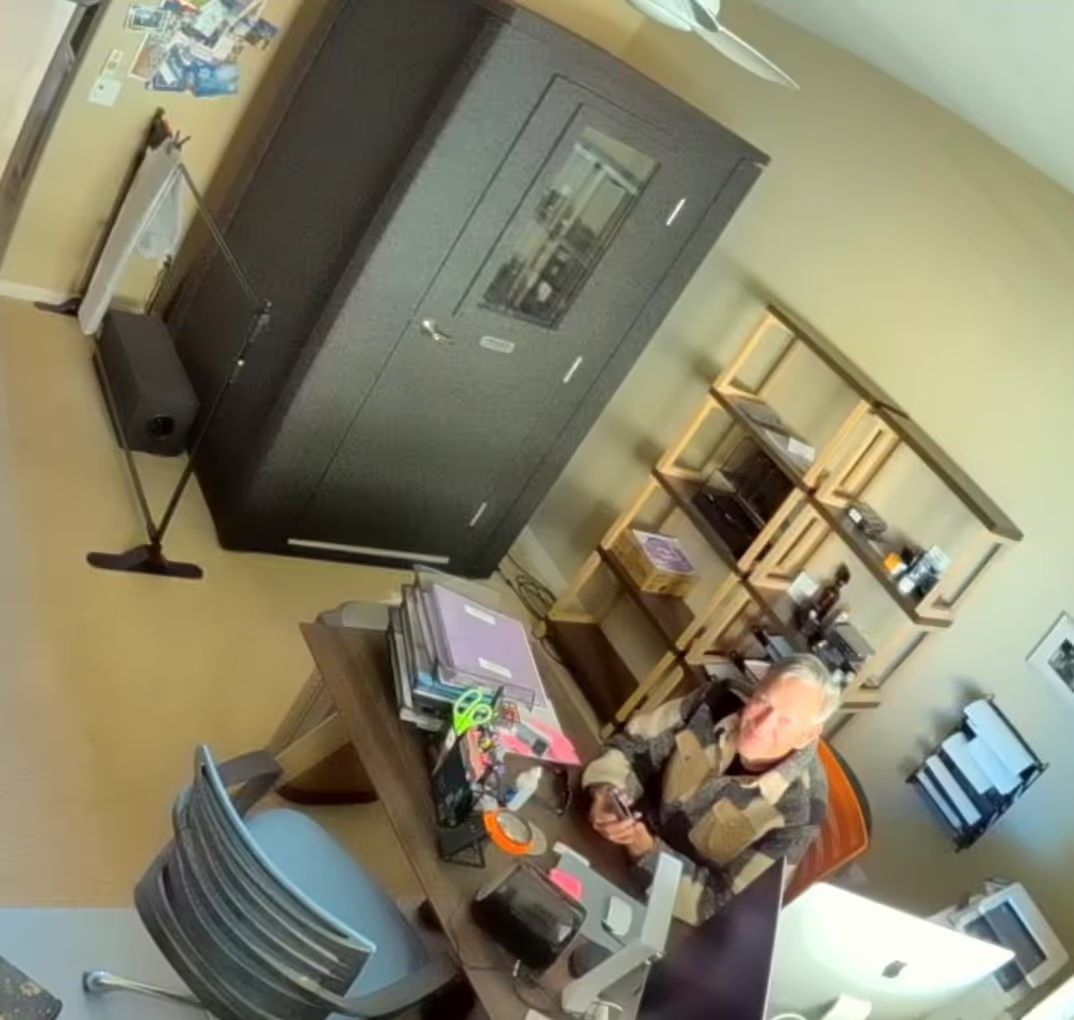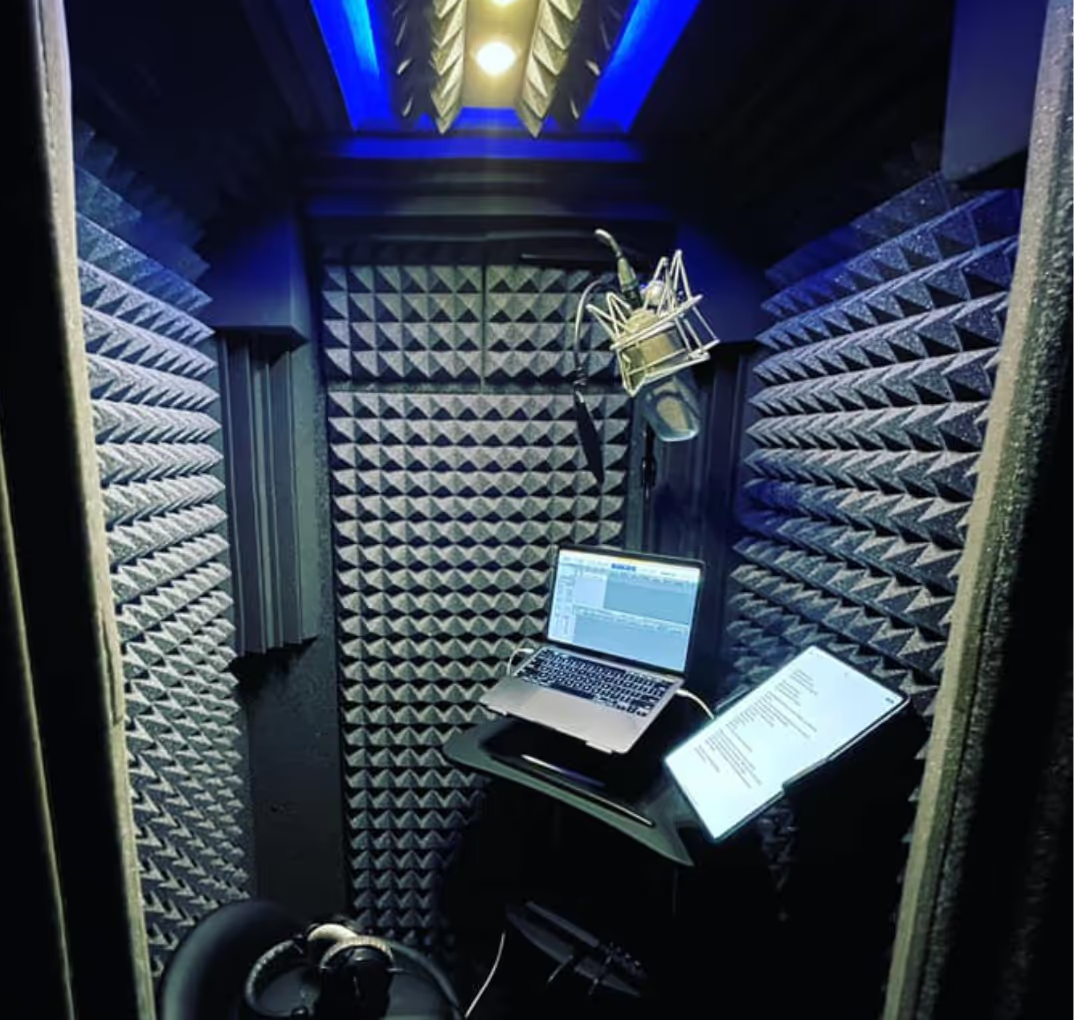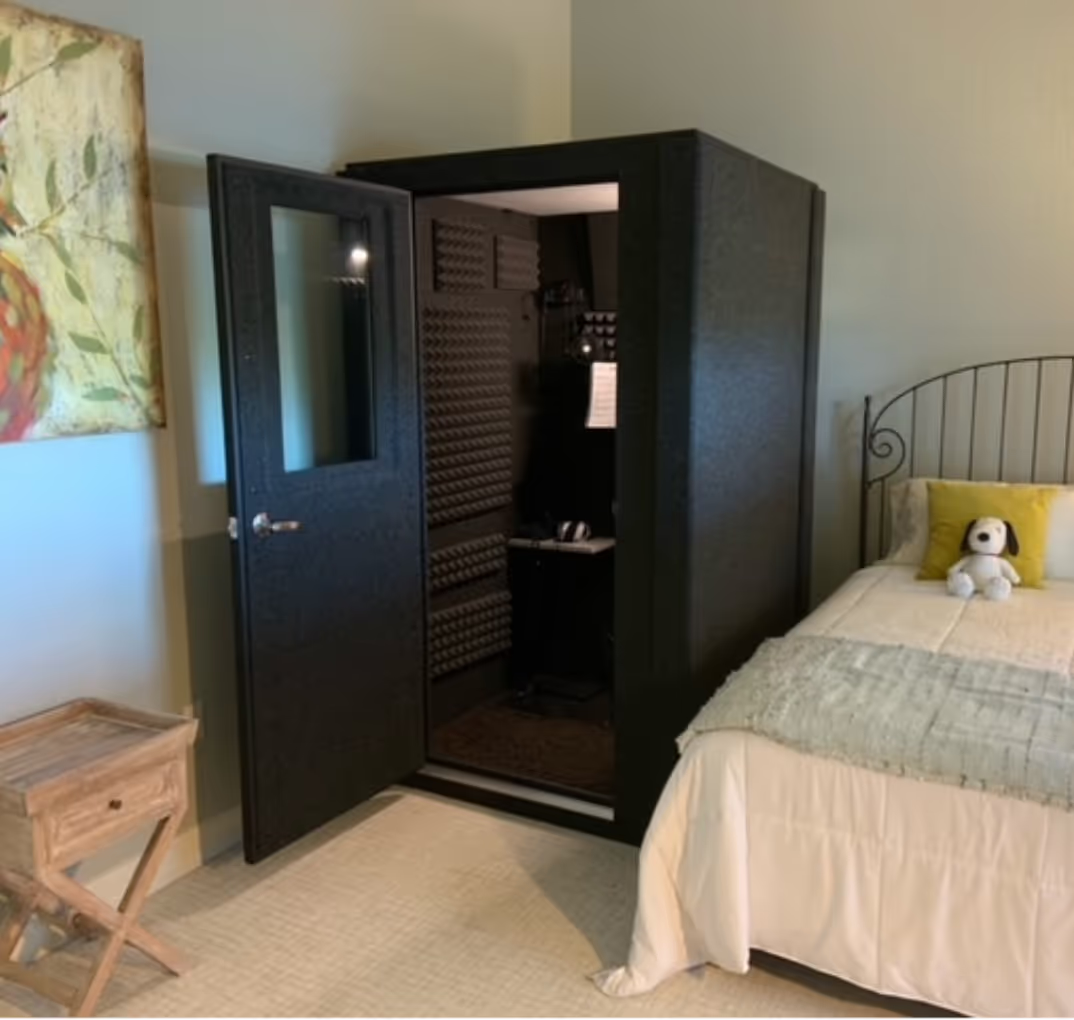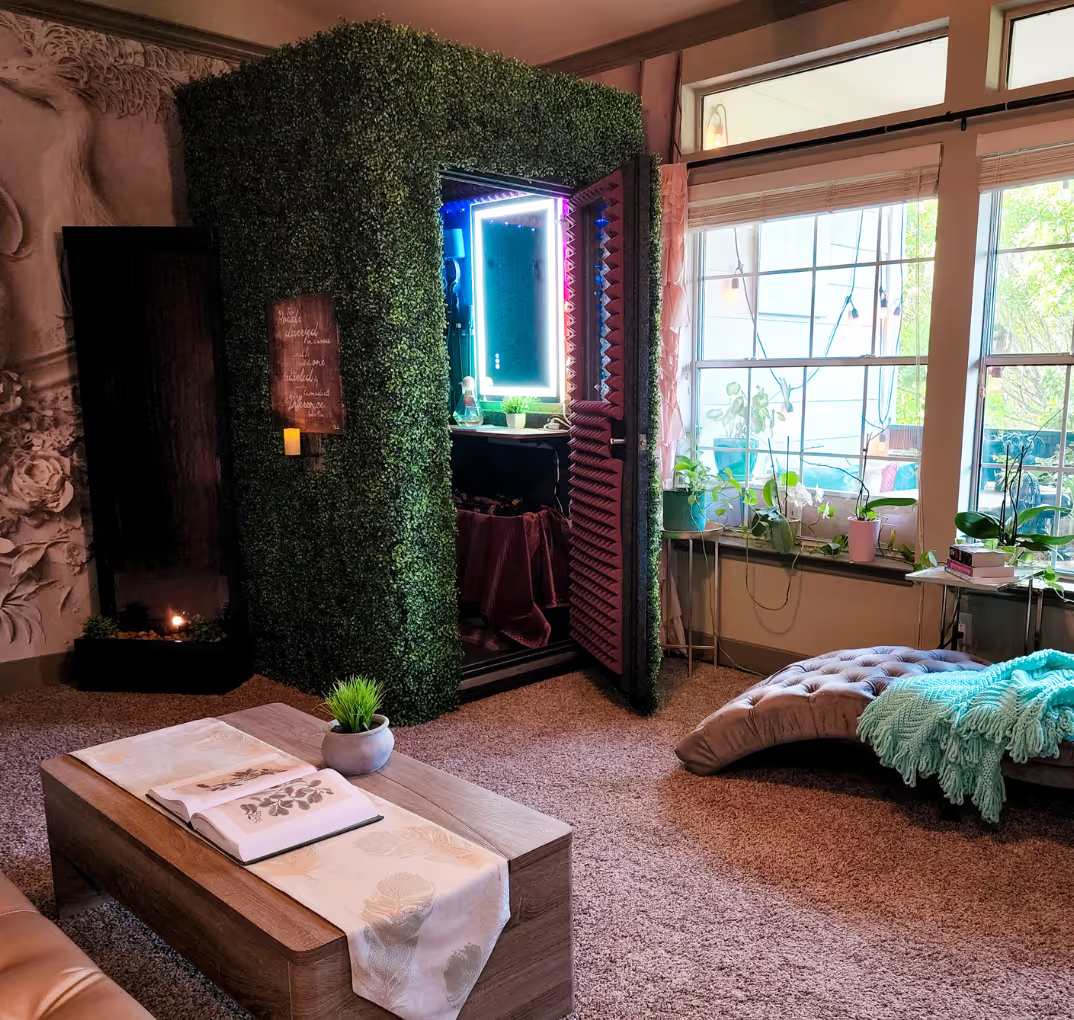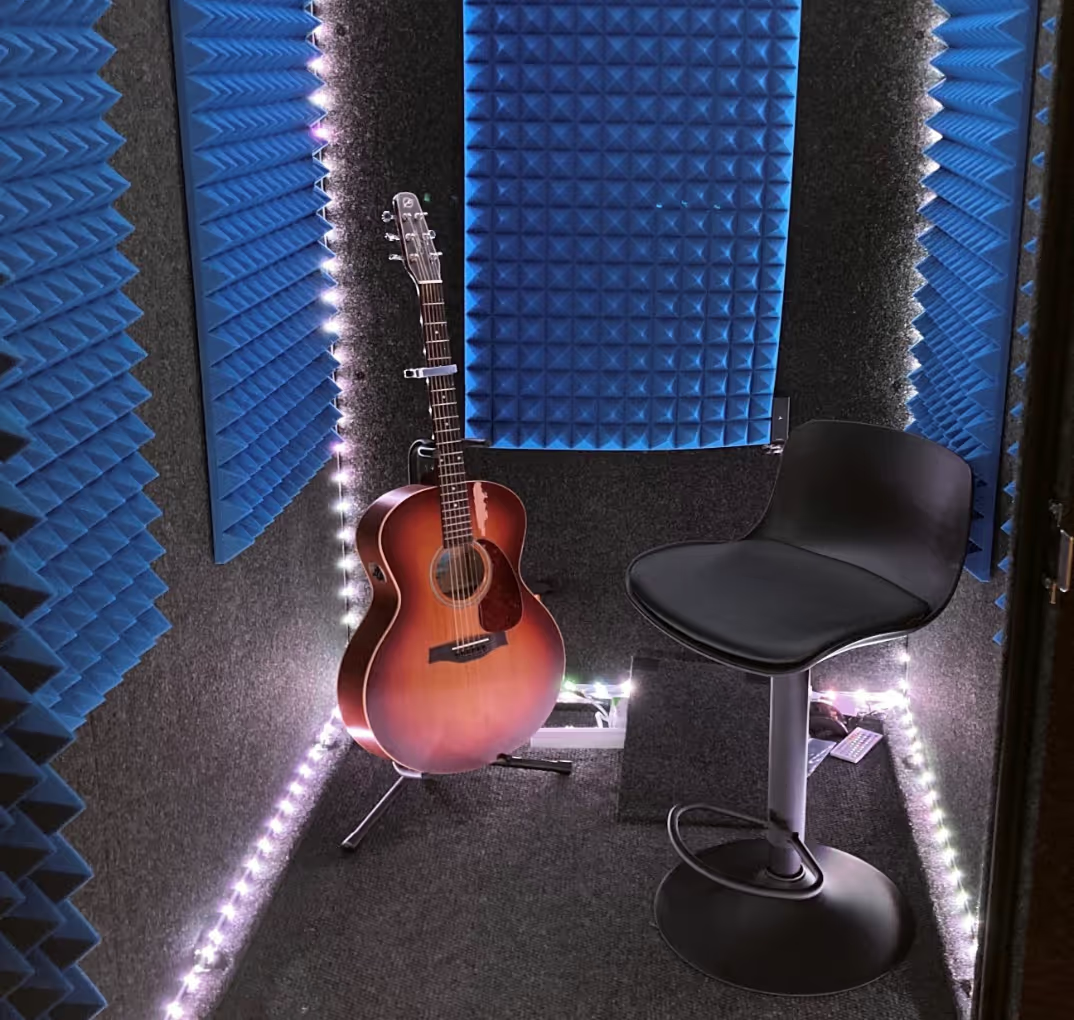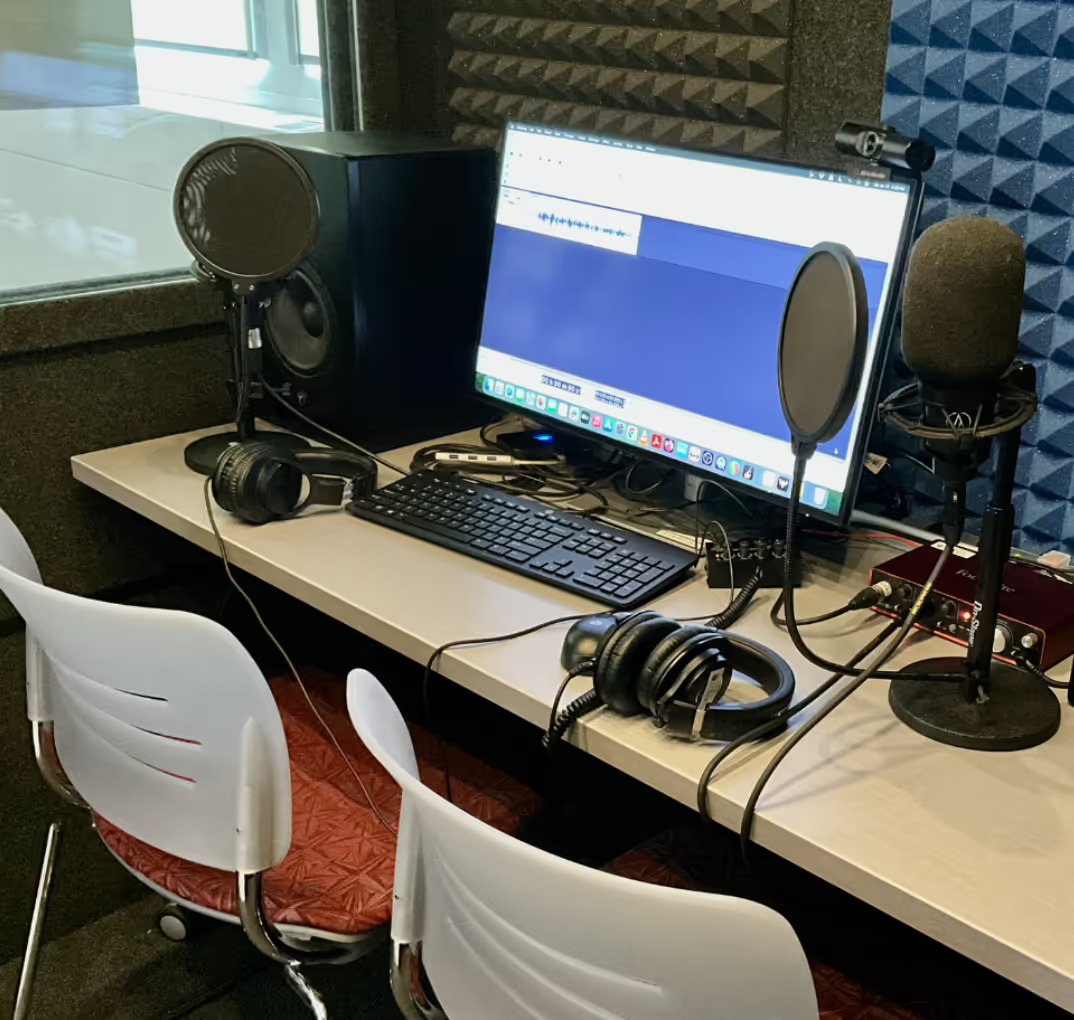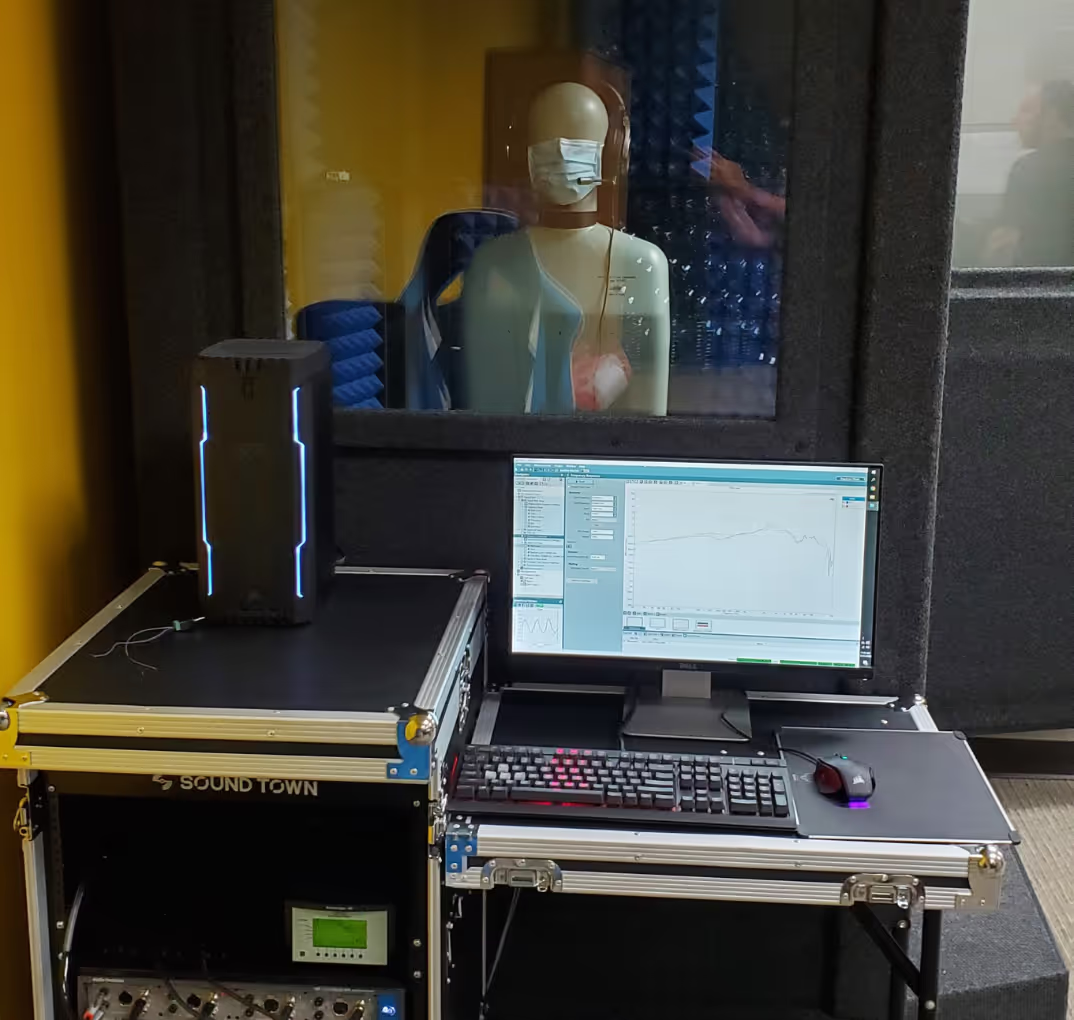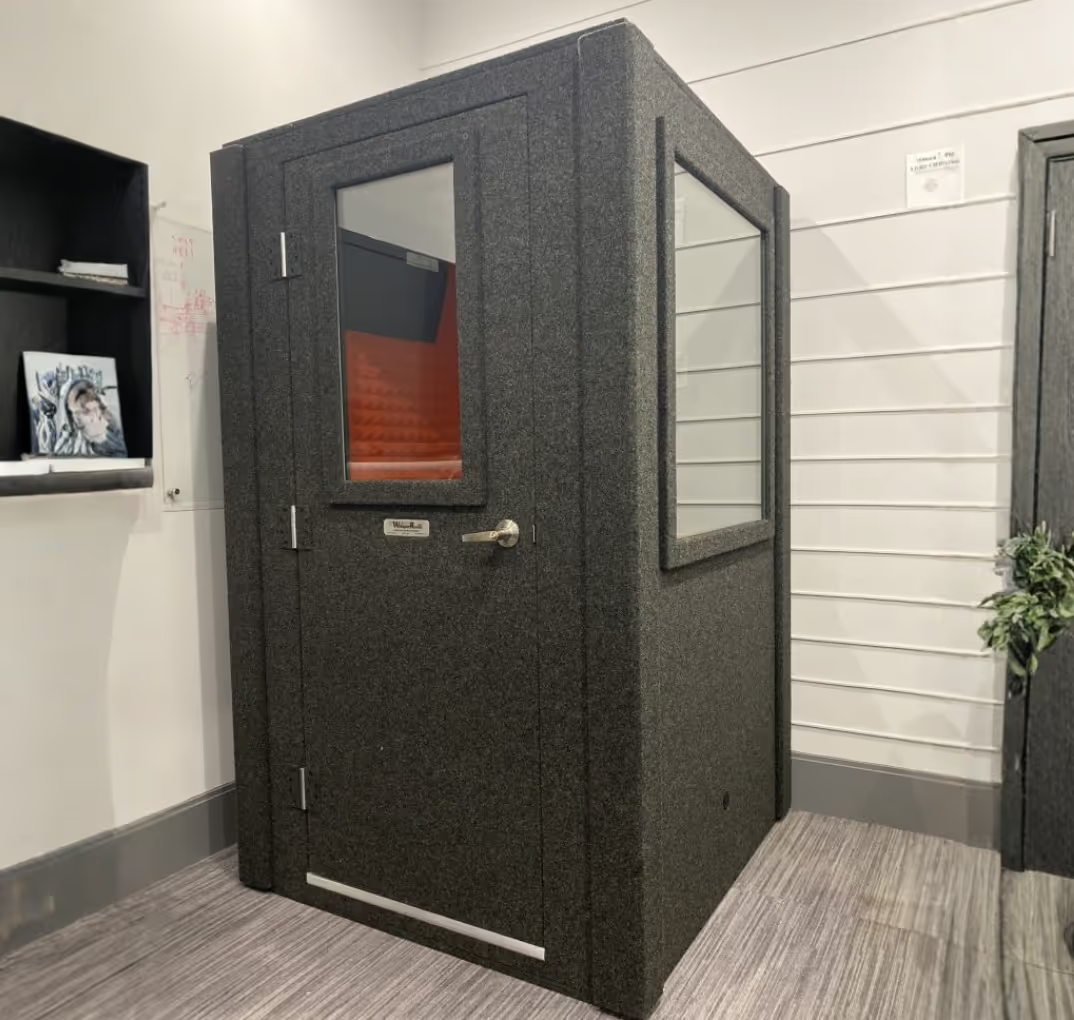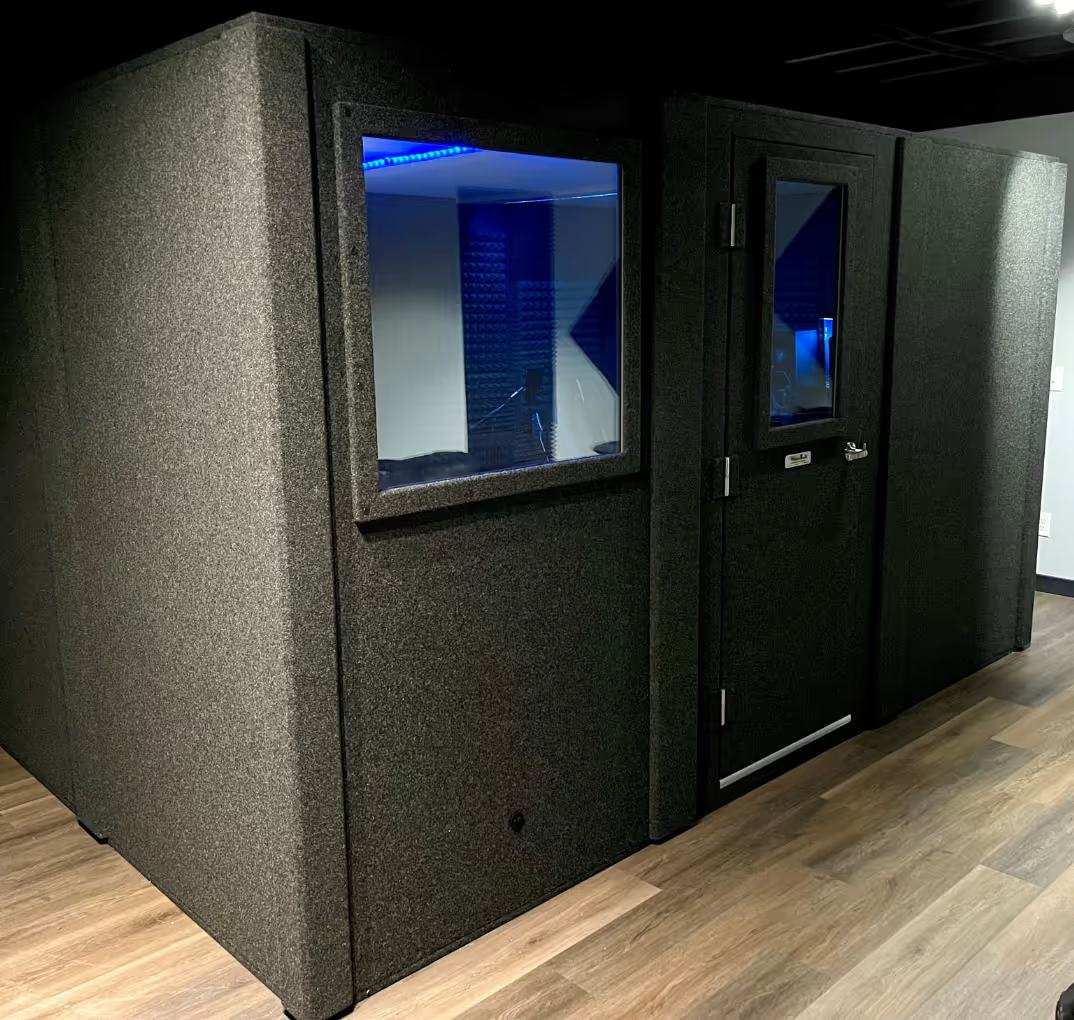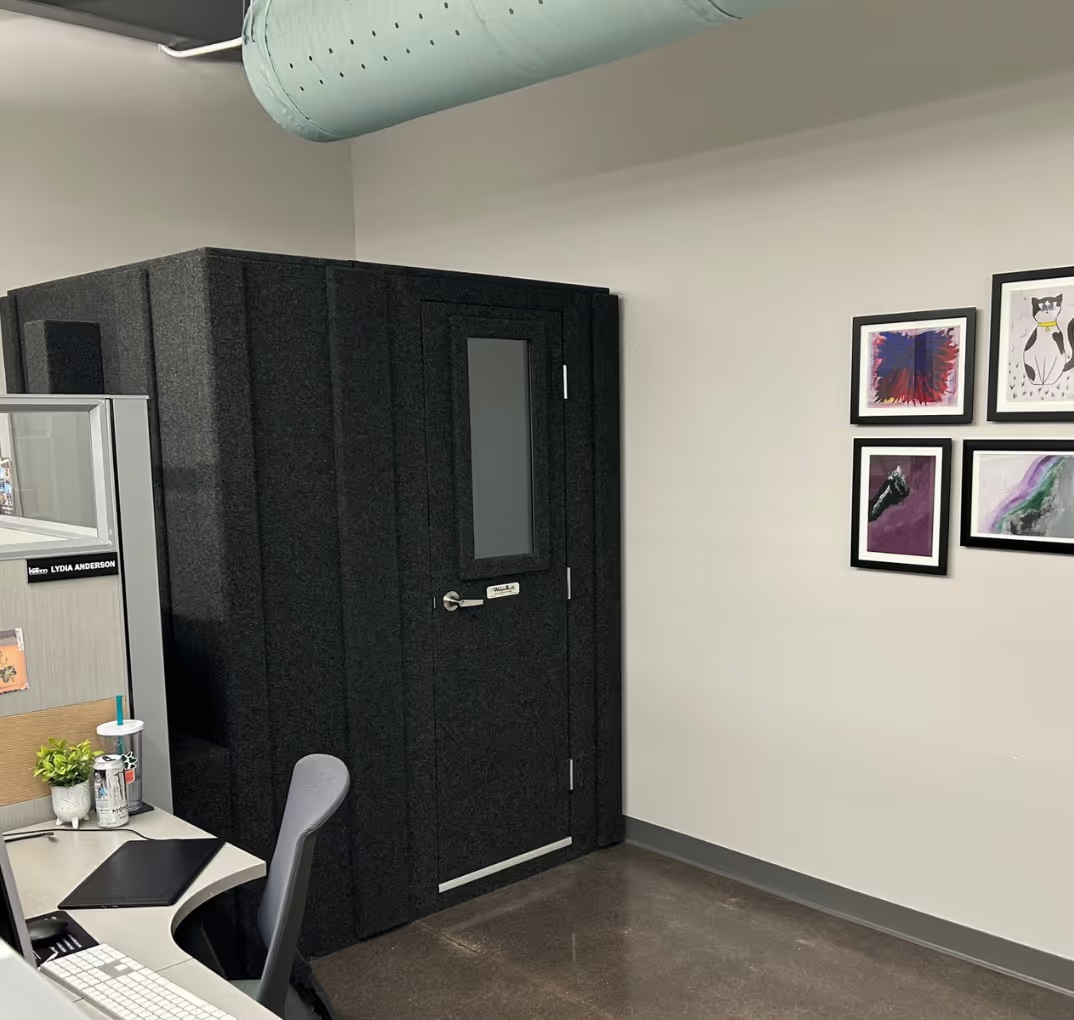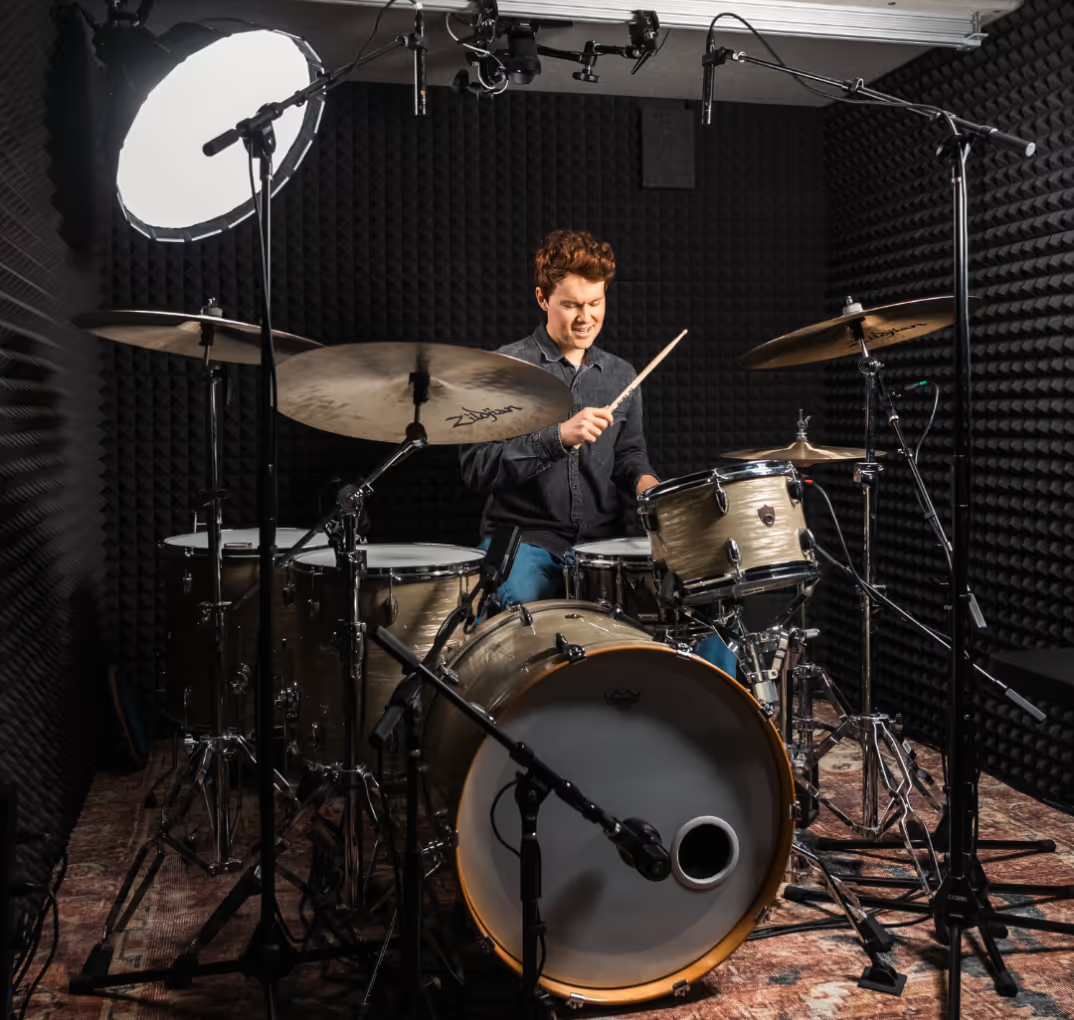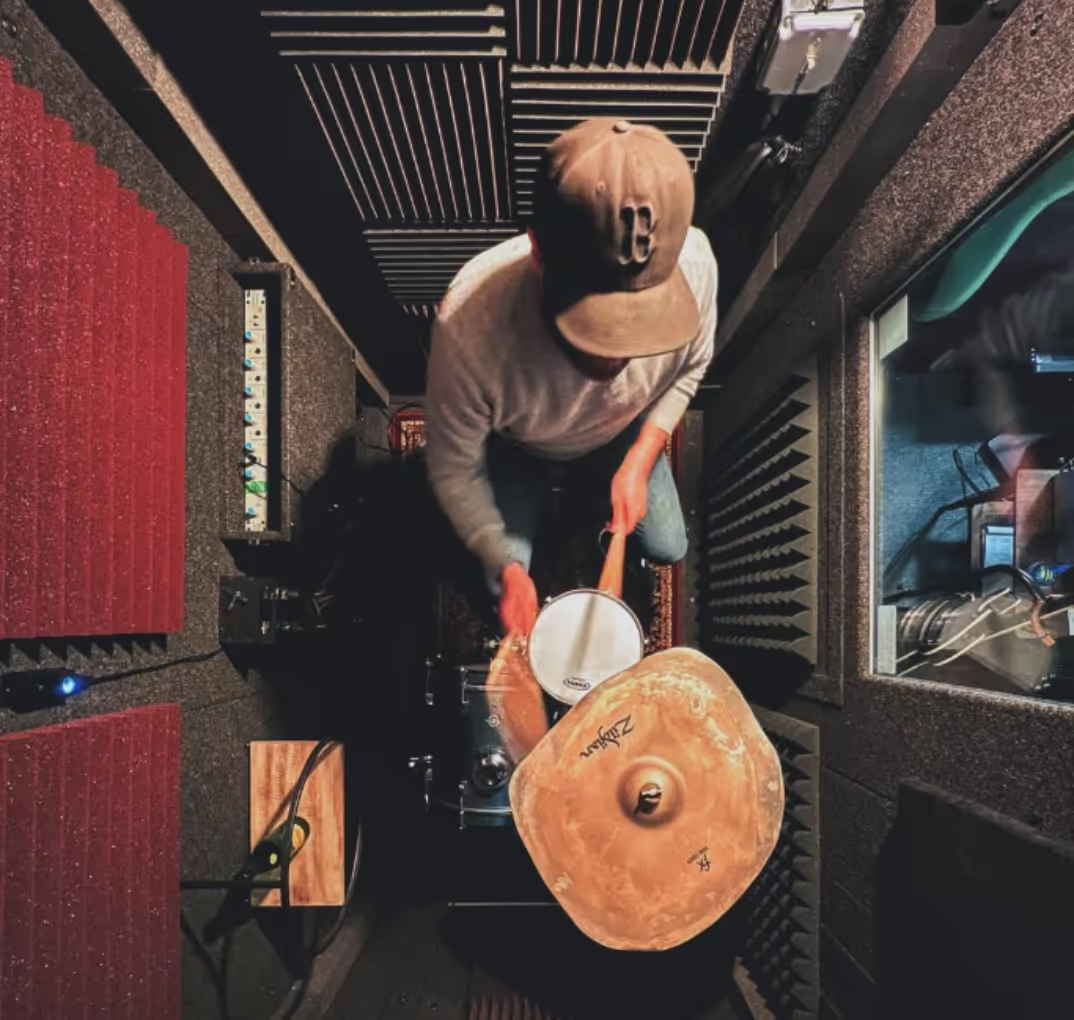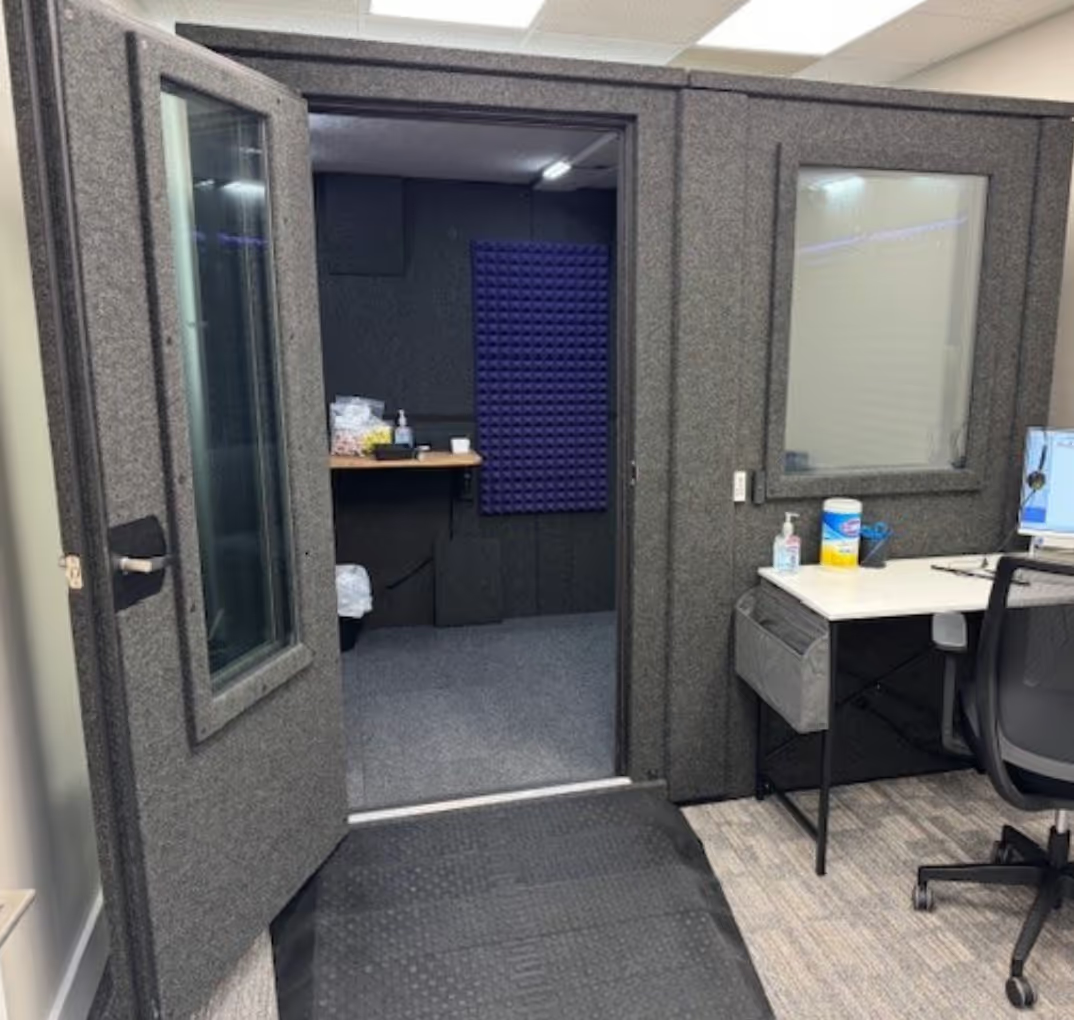Launched your podcast and ready to level up? If your listener count is growing but your sound quality hasn’t caught up, now’s the time to raise the bar. In this guide, we’ll share 9 expert-backed ways to improve your podcast in 2025, from soundproofing your space to polishing your audio in post.
1. What’s the Best Space to Record a Quiet Podcast?
A quiet environment is essential for sounding professional—whether you're recording at home or in a studio. Background noise from neighbors, pets, or appliances can instantly turn off listeners. To avoid this, record in a space with good sound control and minimal distractions.
Not ready to invest in a booth yet? Try these quiet spots:
- Closet – Hanging clothes act as natural absorbers.
- Garage – Detached from the home = fewer interruptions.
- Your car – Surprisingly quiet! Drape blankets over windows for extra absorption.
- Friend’s guest room – A cozy, carpeted room can be ideal.
- Empty office after hours – Quiet and usually insulated.
Pro Tip: For consistent results and long-term podcasting, consider a WhisperRoom® modular sound booth to eliminate ambient noise and create your own dedicated recording space.

2. How Do You Create a Memorable Podcast Intro and Outro?
Your intro and outro are the first and last impressions you leave on listeners—make them count. A strong intro builds credibility, while an engaging outro boosts retention and drives action.
Podcast Intro Tips
Start every episode with energy and clarity.
Use this time to set the tone, introduce your show and host, and preview the episode. Include upbeat music, your show name, and a short hook to grab attention.
Podcast Outro Tips
Your outro should invite next steps.
Encourage subscriptions, shout out social handles, and promote your next episode or website. Music here adds polish and helps listeners recognize your show’s “end signature.”
The Pod Sound School further explains why you need a great intro for your podcast.
Krystal Proffitt walks you through the process of making an outro for your podcast.
Pro Tip: Listen closely to a few popular podcasts and observe how their intros and outros are structured.
3. Where Should You Use Music and Sound Effects in Your Podcast?
Well-placed audio elements make your podcast feel more professional and engaging. Music and sound effects add structure, emotion, and personality to your episodes.
When to Use Music
- Intro/Outro: Set the tone and cue transitions
- Segment Breaks: Signal shifts in topic
- Sponsor Reads: Make ads feel intentional
Using Sound Effects Wisely
Use sparingly—they’re best for emphasis, humor, or brand personality.
Where to Find Royalty-Free Tracks
Avoid copyright headaches by using licensed audio. Trusted sources include:: Purple Planet, Incompetech, Pond5, Freesound, Free Music Archive, and PremiumBeat.
Pro Tip: If you're recording inside a WhisperRoom booth, subtle audio enhancements like effects and ambient layers are easier to control during mixing because you’re starting with cleaner, isolated recordings.
4. Should You Try a Live Podcast Format?
Going live adds energy, spontaneity, and real-time connection with your audience. Live episodes can break routine, invite feedback, and give your podcast a fun "broadcast" vibe.
But it’s not for every show. Avoid live episodes early on if you're still ironing out technical issues or building your listener base.

5. How Can You Prepare Podcast Guests for a Great Interview?
A good guest can improve your show—but only if they’re well-prepared. Don’t wing it. Take the time to set them (and yourself) up for success.
The interview-style show greatly depends on your guest's ability to entertain listeners by answering questions and telling attention-grabbing stories. If you fail to prepare your guests for an engaging discussion, your show will likely suffer from boring content. To keep that from happening, let's look at a few things you can do to properly prepare your podcast's guests for an interview.
How to Prep Your Guests
- Research them thoroughly – Know their work and tone.
- Avoid boring questions – Focus on “how” and “why” instead of “yes/no.”
- Share your questions in advance – Give them time to think.
- Have a pre-show chat – Build comfort and go over technical details.
Pro Tip: If recording remotely, your guest’s environment matters too. Recommend a quiet, acoustically pleasant room.

6. Should You Make a Podcast Episode Outline?
Yes—outlines keep your episode focused, structured, and on time. Even if you’re great at improvising, a plan helps you stay aligned with your episode’s theme and flow.
What a Good Podcast Outline Includes
- Episode title and topic
- Talking points or interview questions
- Segment structure and timing
- Notes on intros, transitions, and CTAs
Pro Tip: Some podcasters plan episode outlines in batches to stay ahead on content.
7. How Can You Build Confidence as a Podcast Host?
Confidence makes your delivery smoother and keeps listeners engaged. If you sound unsure or uncomfortable, it can distract from your content—even if the topic is great.
Ways to Boost Podcasting Confidence
- Study confident hosts – Emulate their tone and pacing
- Join podcasting groups – Get feedback and stay motivated
- Keep learning – Knowledge makes you sound more authoritative
Pro Tip: When you record in a space that feels professional—like a dedicated WhisperRoom booth—it naturally boosts confidence. You know you sound good, so you speak more freely.
8. What Are Some Mic Techniques That Can Improve Podcast Sound?
Even with a good mic, technique matters. Many podcasters fall into bad habits—like talking too far from the mic or speaking off-axis. Here are two simple ways to level up your sound.
Mic Proximity
Distance affects tone and clarity. Try getting closer or backing off slightly to find the sweet spot for your voice and microphone type.
Mic Position
Adjust the angle.
- Lower and tilt upward = brighter sound
- Higher and tilt downward = warmer tone
Pro Tip: Experiment with mic techniques in a WhisperRoom to remove outside variables and clearly hear each adjustment.
9. How Much Time Should You Spend on Podcast Post-Production?
Post-production shapes the final experience for your listeners. Whether you edit a little or a lot, your goal should be a clean, natural flow.
3 Core Stages of Post-Production
Editing
Trim awkward pauses, cut filler, rearrange sections, and prep segments.
Mixing
Balance levels, apply EQ, reduce background noise, and compress tracks.
Mastering
Ensure loudness consistency and polish the file for publishing.
Pro Tip: Starting with clean audio reduces the editing workload significantly—and helps you move through mixing/mastering faster.









.avif)
.avif)
.avif)

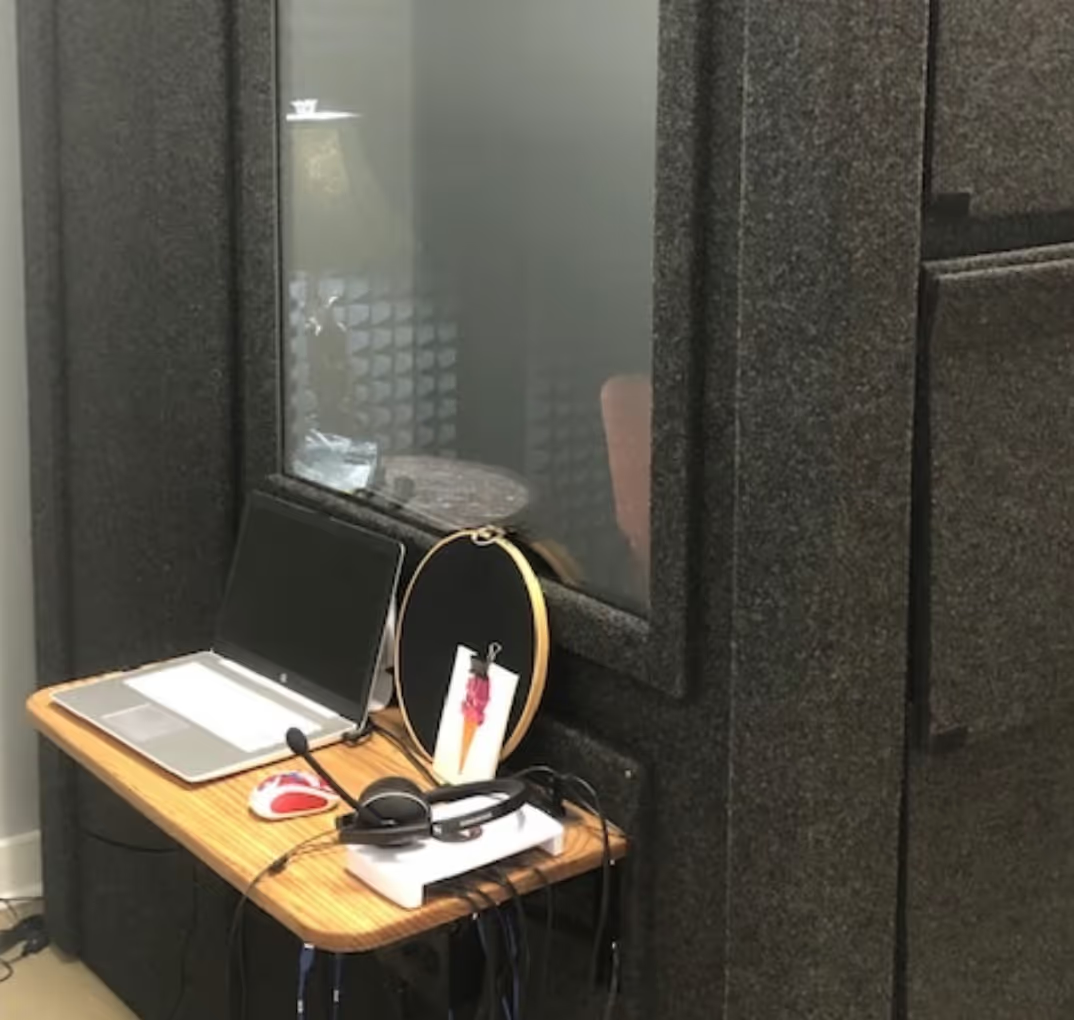
.avif)
.avif)

.avif)
.avif)
.avif)
.avif)
.avif)
.avif)
.avif)
.avif)
.avif)
.avif)
.avif)
.avif)
.avif)
.avif)
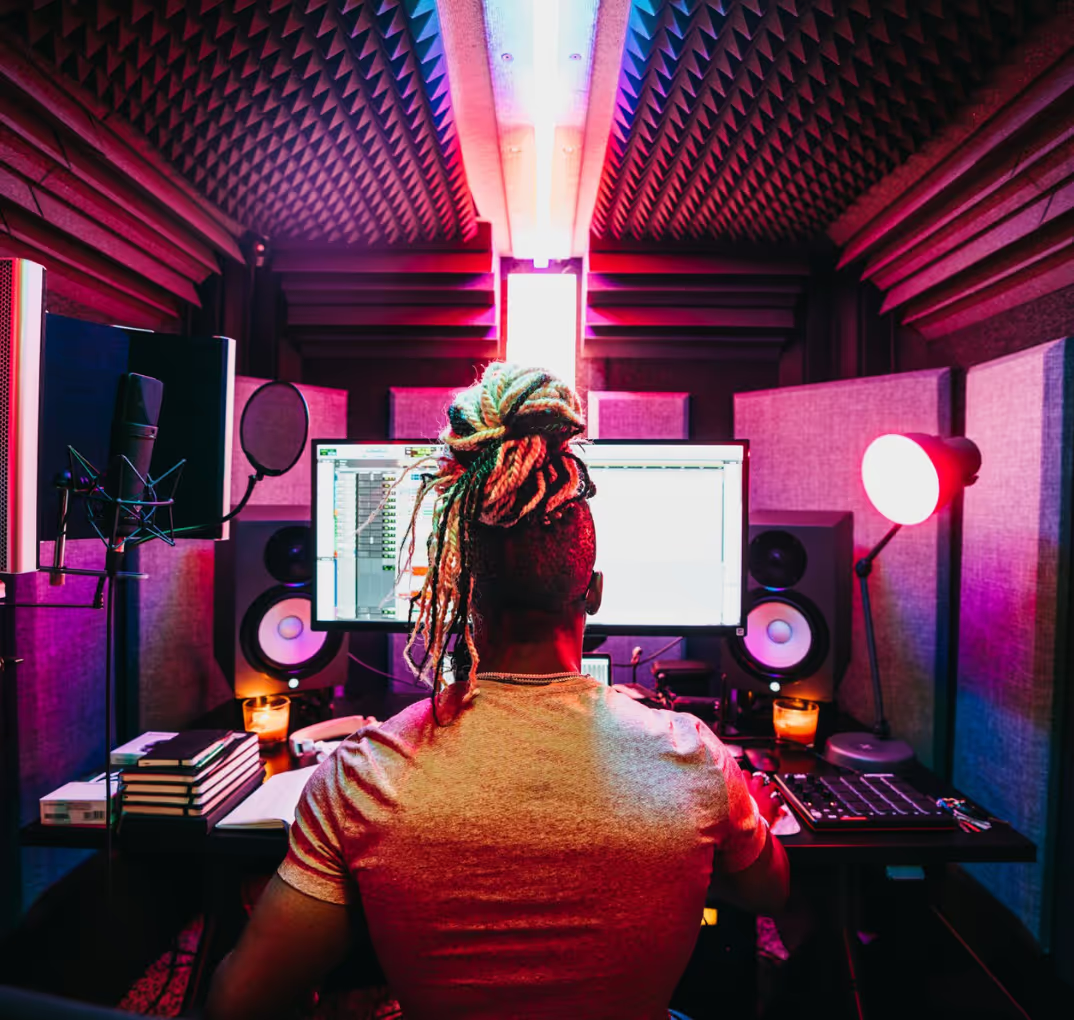
.avif)
.avif)

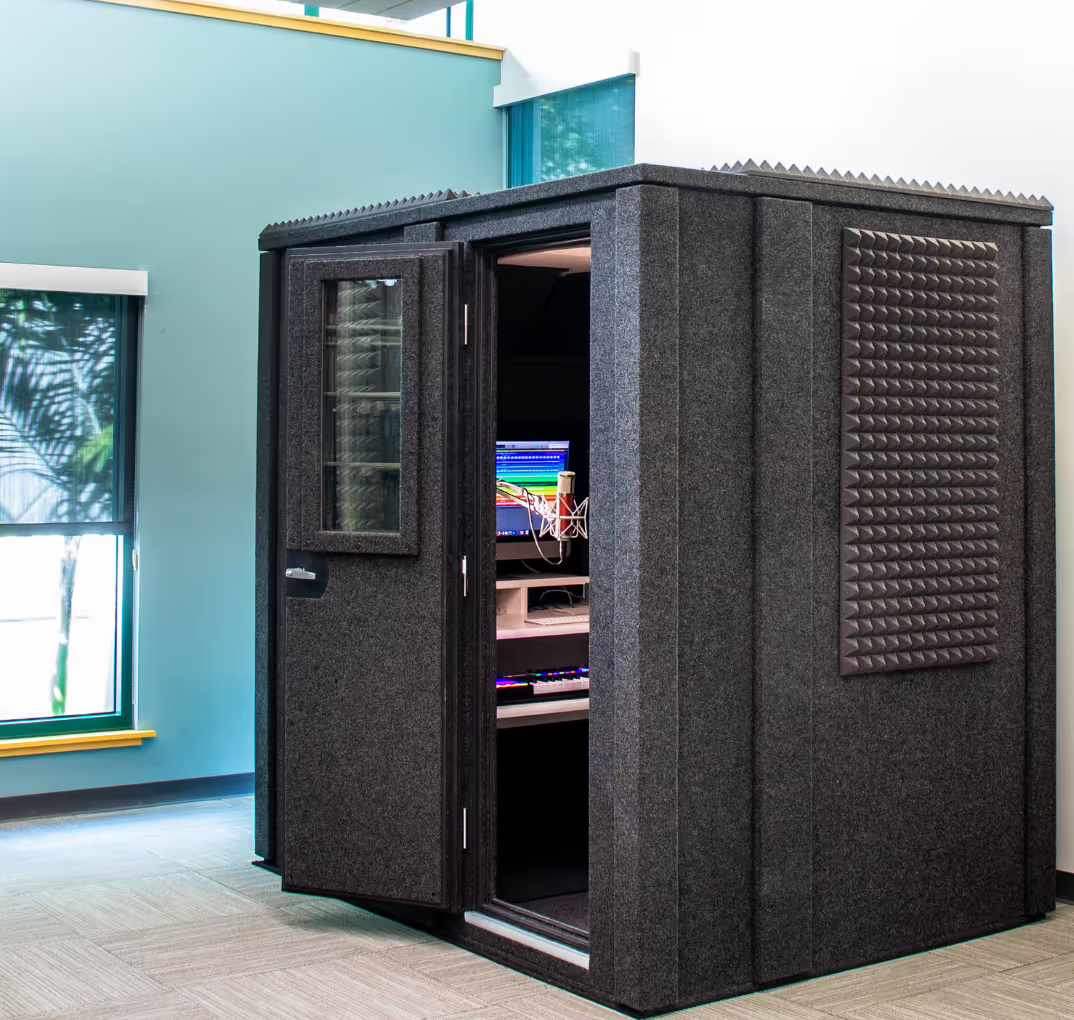
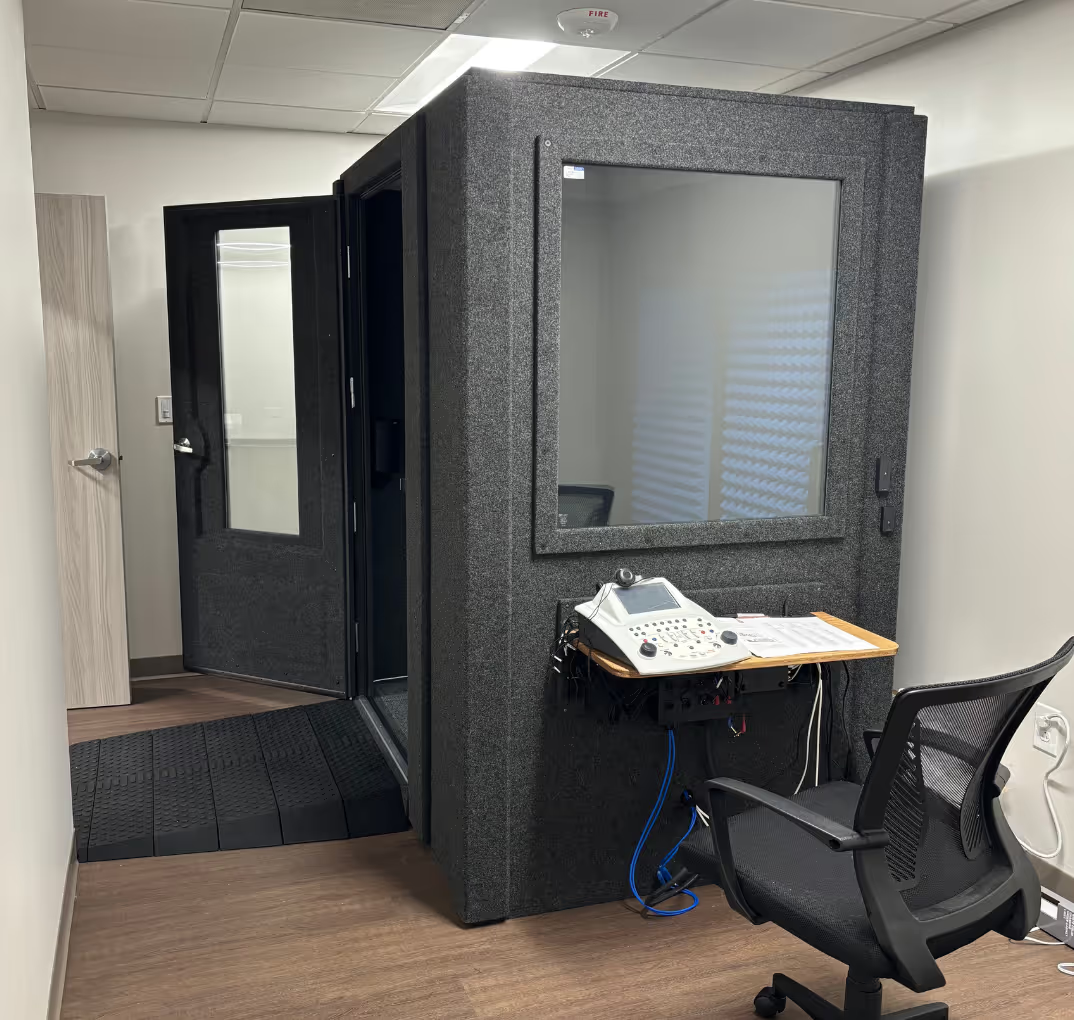
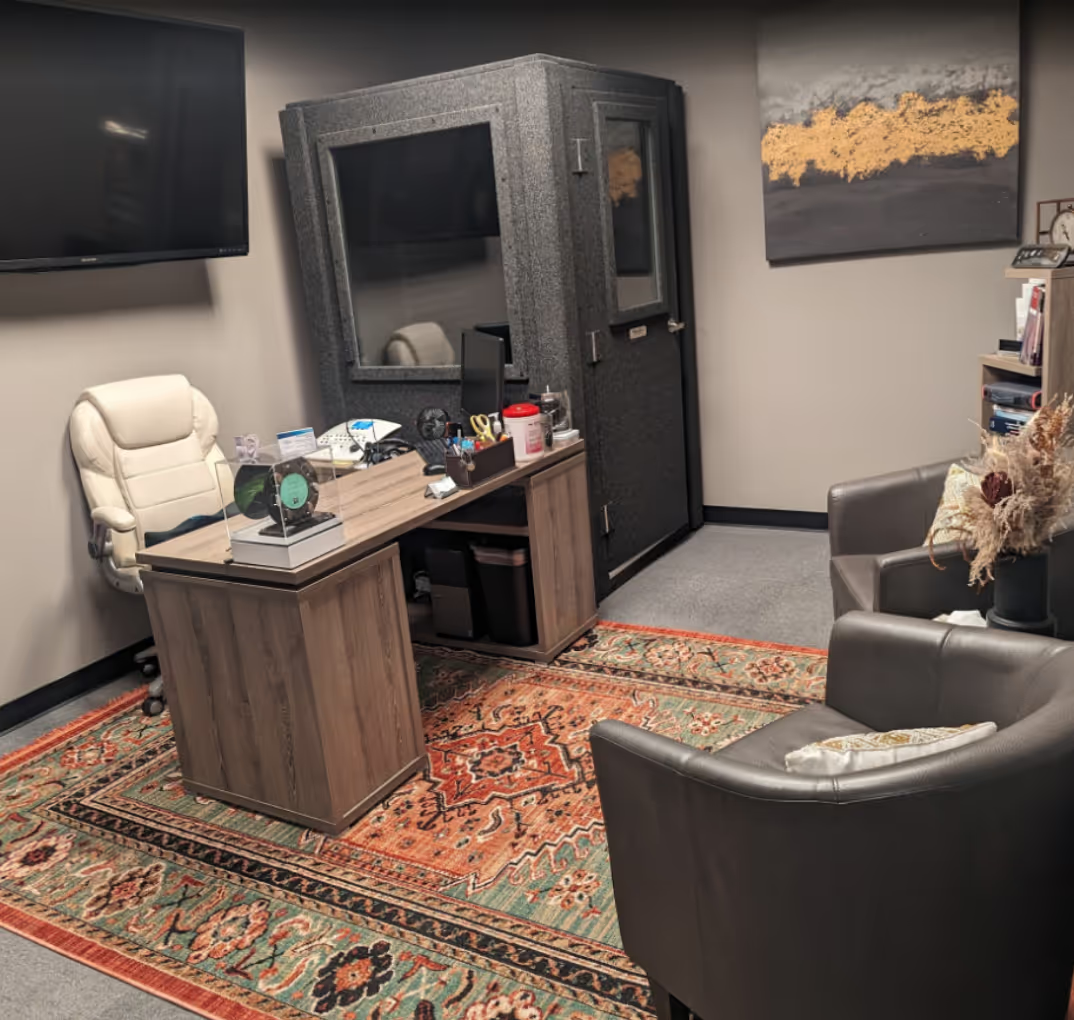


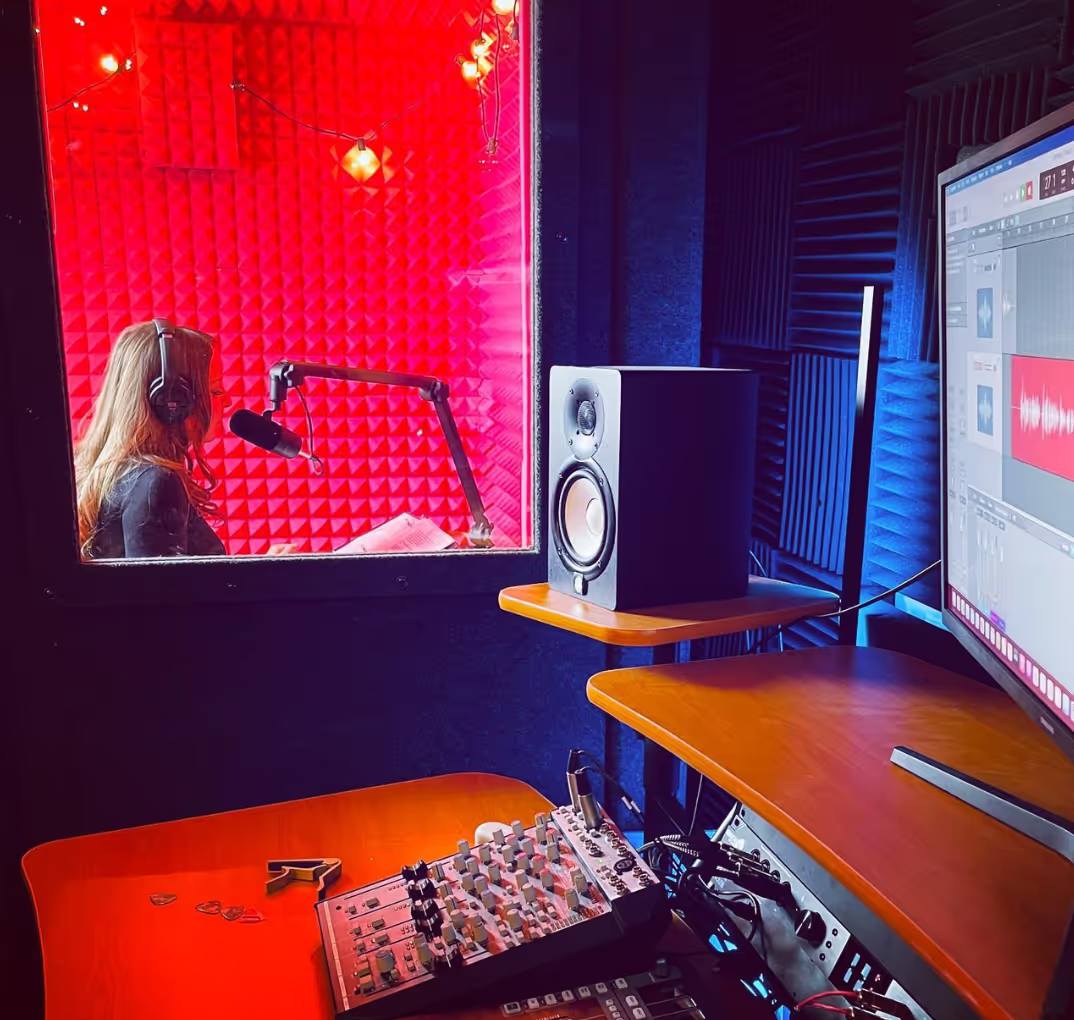
.avif)

